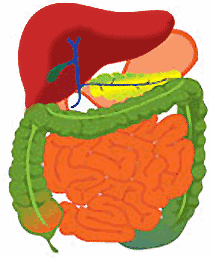
Cells that line the small intestine are efficient at absorbing fats (triglycerides) from food, as well as secreting them into the blood. While fats absorbed by the intestine travel to various tissues in the body for storage, the intestine itself also has an ability to store these lipids. A recent article by TGHRI Senior Scientist Dr. Gary Lewis provides important insight into how the body controls the balance between fat storage and release.
In the article, Dr. Lewis identified a new role for a gut hormone known as GLP2. After administering GLP2 to healthy volunteers, the research team found that blood triglyceride levels were momentarily elevated. In a separate experiment, his team devised a way to track triglycerides and found that GLP2 caused the release of triglycerides that had been stored inside intestinal cells.
Currently GLP2 is used to treat people with nutrient deficiencies caused by bowel disorders. This study raises important questions about whether long term effects could include elevated blood lipid levels, which is a risk factor for heart disease.
Dr. Lewis comments, "This work reveals a new way to control blood triglycerides and may enable the design of new, more specific drugs to treat bowel disorders. Furthermore, drugs that target GLP2 may represent a new strategy help reduce high blood triglyceride associated with heart disease."
This work was supported by the Canadian Institutes of Health Research, the National Institutes of Health and the Toronto General & Western Hospital Foundation. GF Lewis is the Sun Life Financial Chair in Diabetes and the Drucker Family Chair in Diabetes Research.
Glucagon-like peptide 2 regulates release of chylomicron from the intestine. Dash S, Xiao C, Morgantini C, Connelly PW, Patterson BW, Lewis GF. Gastroenterology. 2014 Aug 27. [Pubmed abstract]





Comments